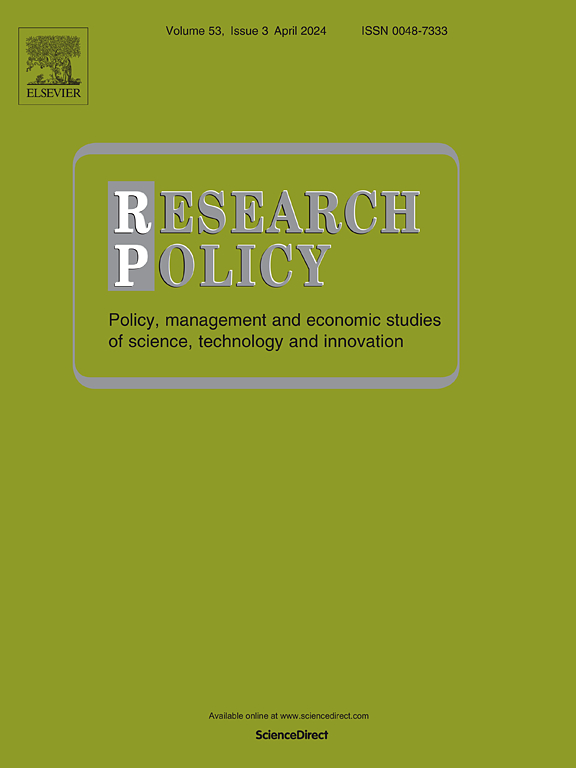Variations in innovation strategies for sustainable development: Sustainable innovation policy instrument mixes of ten small OECD countries across five sectors
IF 8
1区 管理学
Q1 MANAGEMENT
引用次数: 0
Abstract
Innovation plays an inevitable role in transforming our current modes of production and consumption towards sustainable development. Yet it is unclear what strategies and policy instruments different governments have been using to support innovation for sustainable development. To address these gaps, we provide the first comprehensive multi-sectoral (agriculture, water, health, energy, and manufacturing) and multi-country (10 smaller developed and innovative countries) analysis. We synthesized a novel dataset of 1722 sustainable innovation policy interventions (2008–2020) and used correspondence analysis to identify the different government strategies. The strategy characteristic of the Nordic countries with high government R&D spending and mostly coordinated market economies tends to support targeted R&D funding and market creation (e.g., public private partnerships, international technology transfer, demonstration projects). This is in contrast with the strategies of Israel and New Zealand focusing on firm innovation through direct economic tools (e.g., incubators, venture capital support) and Switzerland creating an enabling environment for innovation (e.g., clusters, networks, science & technology parks, basic research, public research centers, regulations), all three countries being characteristic of liberal market economies. The empirical data also revealed that there are three policy areas that are relatively underrepresented that merit additional research as potentially hindering sustainable innovation.
可持续发展创新战略的变化:十个经合组织小国在五个部门的可持续创新政策工具组合
创新在推动当前生产和消费方式向可持续发展转变中发挥着不可避免的作用。然而,目前尚不清楚各国政府采用了哪些战略和政策工具来支持创新促进可持续发展。为了解决这些差距,我们提供了第一个全面的多部门(农业、水、卫生、能源和制造业)和多国(10个较小的发达国家和创新型国家)分析。我们综合了1722个可持续创新政策干预(2008-2020)的新数据集,并使用对应分析来识别不同的政府策略。具有高政府研发支出和大多数协调的市场经济的北欧国家的战略特点倾向于支持有针对性的研发资金和市场创造(例如,公私伙伴关系、国际技术转让、示范项目)。这与以色列和新西兰通过直接经济工具(例如,孵化器,风险资本支持)关注企业创新的战略形成鲜明对比,而瑞士则为创新创造了有利的环境(例如,集群,网络,科学和;技术园区,基础研究,公共研究中心,法规),这三个国家都是自由市场经济的特征。实证数据还显示,有三个政策领域的代表性相对不足,值得进一步研究,因为它们可能阻碍可持续创新。
本文章由计算机程序翻译,如有差异,请以英文原文为准。
求助全文
约1分钟内获得全文
求助全文
来源期刊

Research Policy
MANAGEMENT-
CiteScore
12.80
自引率
6.90%
发文量
182
期刊介绍:
Research Policy (RP) articles explore the interaction between innovation, technology, or research, and economic, social, political, and organizational processes, both empirically and theoretically. All RP papers are expected to provide insights with implications for policy or management.
Research Policy (RP) is a multidisciplinary journal focused on analyzing, understanding, and effectively addressing the challenges posed by innovation, technology, R&D, and science. This includes activities related to knowledge creation, diffusion, acquisition, and exploitation in the form of new or improved products, processes, or services, across economic, policy, management, organizational, and environmental dimensions.
 求助内容:
求助内容: 应助结果提醒方式:
应助结果提醒方式:


